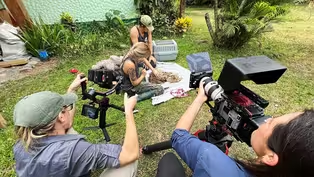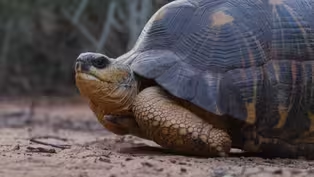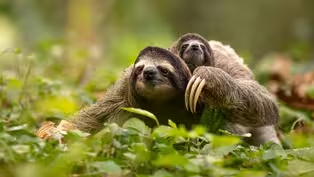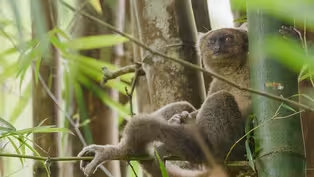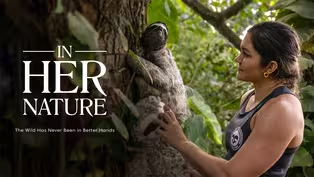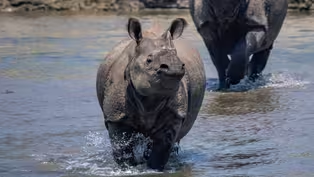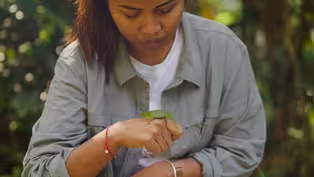
The Chameleon Queen | In Her Nature
Special | 13m 25sVideo has Closed Captions
Despite cultural taboos, herpetologist Fandresena Rakotoharimalala is determined to save chameleons.
Despite cultural taboos, herpetologist Fandresena Rakotoharimalala is on a mission to save chameleons in Madagascar. Possessing an uncanny ability to spot camouflaging chameleons, she hopes to ensure protections for the island's dwindling species.
Problems playing video? | Closed Captioning Feedback
Problems playing video? | Closed Captioning Feedback
Major support for NATURE is provided by The Arnhold Family in memory of Henry and Clarisse Arnhold, Sue and Edgar Wachenheim III, The Fairweather Foundation, Charles Rosenblum, Kathy Chiao and...

The Chameleon Queen | In Her Nature
Special | 13m 25sVideo has Closed Captions
Despite cultural taboos, herpetologist Fandresena Rakotoharimalala is on a mission to save chameleons in Madagascar. Possessing an uncanny ability to spot camouflaging chameleons, she hopes to ensure protections for the island's dwindling species.
Problems playing video? | Closed Captioning Feedback
How to Watch Nature
Nature is available to stream on pbs.org and the free PBS App, available on iPhone, Apple TV, Android TV, Android smartphones, Amazon Fire TV, Amazon Fire Tablet, Roku, Samsung Smart TV, and Vizio.
Buy Now
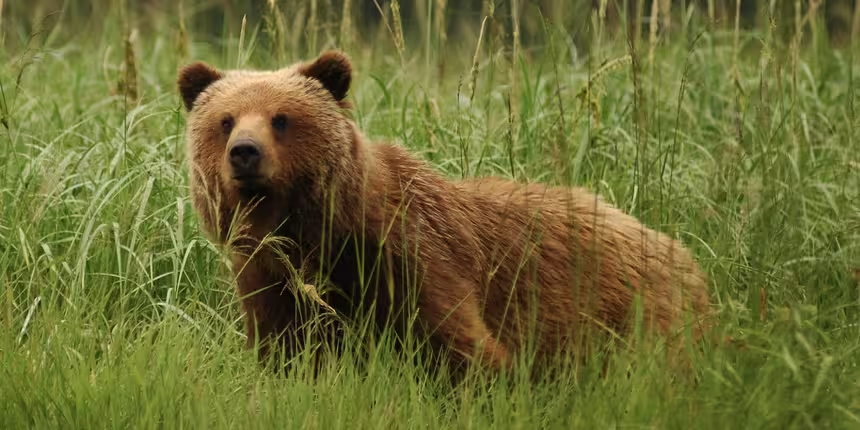
Explore More Ways to Watch
Bring the beauty and wonders of wildlife and natural history into your home with classic NATURE episodes.Providing Support for PBS.org
Learn Moreabout PBS online sponsorshipMore from This Collection
"In Her Nature" shines a spotlight on the fearless women who protect the wildlife of our world. Featuring breathtaking cinematography combined with rare animal behavior, "In Her Nature" showcases the robust conservation efforts being led by women in the most perilous habitats through the lens of an award-winning, all-female production team.
The Women Behind the Wild | In Her Nature
Video has Closed Captions
Go behind the lens with the making of 'In Her Nature.' (30m 40s)
The Slowest Stampede on Earth | In Her Nature
Video has Closed Captions
In the otherworldly Spiny Forest of Madagascar, a historic release is about to take place. (19m 31s)
Saving The Slowest Mammal on Earth | In Her Nature
Video has Closed Captions
A sloth scientist, her tree-climbing BFF, and their dog work to save Costa Rica’s sloth populations. (37m 46s)
Saving the World’s Rarest Lemurs | In Her Nature
Video has Closed Captions
Greater bamboo lemurs, recently thought to be extinct, are critically endangered. (22m 1s)
Series Trailer | In Her Nature
Video has Closed Captions
Meet the courageous women shaping wildlife conservation. (1m 25s)
The Rhino Whisperer | In Her Nature
Video has Closed Captions
The story of Nepal's first female nature guide and her fight to save the country's wildlife. (20m 51s)
Providing Support for PBS.org
Learn Moreabout PBS online sponsorshipField work is not without its risks.
When you're out in the night in the dark in a forest.
There are scorpions all over the place.
You might be hiking for 10-plus miles a day.
You might feel terrible.
Then all of a sudden you find a chameleon and you don't care about any of that.
Madagascar is home to ninety eight different species of endemic chameleons.
We have the biggest species of chameleon in the world called Calumma parsonii, as well as the smallest one called Brookesia nana.
They have a camouflage system allowing them to change color This camouflage protects them from predators who want to hunt them.
Their eyes can move approximately three hundred and forty degrees around.
When we have a high diversity of chameleon species in a forest, it means that forest is healthy.
My parents and my relatives didn't react well when I told them that I wanted to become a researcher.
They were worried about me working in the forests, especially when they found out that my research focuses on chameleons.
In some regions, touching or holding chameleons is taboo.
People think that if you touch them, something bad will happen.
But research is a passion for me.
The destruction of the animals' habitat is one of the biggest threats for chameleons.
The pet trade is another.
I would like to link the protection of the environment with the use of genomics.
I will be the first Malagasy person leading genetic research on chameleons.
My research looks at what species of chameleons live where.
Why do these species only exist in this area?
Some of these habitat zones are not protected areas.
Now, if chameleons' habitat disappears, the endemic species may also face extinction.
To carry out genetic research, I simply take samples from the tip of the tail.
The sample collection doesn't hurt them because they're tiny samples from their skin.
I clean them with sterile alcohol.
Then I release the animal where I found it.
My wish is to find out where different species are located to show the value and the importance of protecting these species and their habitat in Madagascar.
In 2022, I travelled to one location where I met a woman herpetologist.
Her name is Dr. Sara Ruane.
what do you think I did with my badge?
Oh, it's in my pocket.
Thank God.
You know, because I lost my badge last week.
Hey Anne!
I'm Dr. Sara Ruane, and I am the associate curator of reptiles and amphibians here at the Field Museum in Chicago, Illinois.
I spent a lot of time there when I was a kid out and about trying to catch reptiles and amphibians, anything I could put in a jar.
I'm one of Fandresena's advisors for her doctoral research on chameleons.
it's the first work with the next gen sequencing and combining the ecology and the phylogeny of chameleons.
So it's the first study on this site.
That's what I thought.
I figured you're the first person from Madagascar to do this.
So this is gonna take the world by storm.
...the herpetology world.
It's going to be big news for the chameleons.
It's really important to asses the diversity.
You need to know what's there These are all my field notes.
So February, 2022.
Ambohitantely and Fandresena.
We saw some leaf tailed geckos.
Couple of chameleons.
Oh I see him, geez!
That was- I just can't believe you could spot that.
Fandresena's ability to see chameleons where other people see none is a true superpower.
I love more than anything going out to the field.
We're leaving Antananarivo heading up to the field site Alright, well here we go.
We're going to rock and roll.
You're looking for a very particular animal, chameleon, snake, there's a lot of pressure Look at his llittle ears.
these animals can be extremely elusive.
And you need to find it because there's no DNA samples for it.
Sometimes they seem impossible to find.
What I like the most about working with Sara is she doesn't act like a boss, Here I am, covered in snake ___ as per usual as per usual She supports me by showing me new things to consider, and this helps me with my research.
I feel like in describing a chameleon, it sounds like such a, like, Dr. Seuss sort of animal A chameleon might be sitting on a branch.
and it sees a grasshopper two feet away, It shoots that tongue out, and bam!
It pulls it back in, crunches it up and swallows it.
There's no other lizards like them.
If we care at all about conservation, knowing what animals exist and what species exist in certain places is actually sort of the baseline information that you need.
Do you want to see me do this again for the camera?
Now that I did it - Perfect!
In order to best get a representation of a whole animal, The more genes you include, usually the better.
You can even get the entire DNA sequence called the whole genome.
Looking at the ecology, as well as the population genetics of the chameleons By taking DNA samples, sequencing different genes, and then running some analysis.
You can see are genes moving from population A to B?
Are we accurately describing the diversity?
Do we have one species, do we have two species, Do we have five species?
Just because these animals look similar doesn't mean they're the same.
Knowing that we need to, especially conserve population A, because it's a micro endemic, might be really key for conservation strategies as well.
It's a.... female... Lady snake.
Lady snake for the ladies.
Snake Ladies.
One of the things that I am really proud of with respect to working with Fandresena is the fact that this work is going to have some effect on conservation in Madagascar as far as giving better information, more detailed information, both on its biodiversity, and what's important for maintaining that biodiversity.
I've had the opportunity to interact with the local communities during my research, I've educated and raised awareness about the importance of chameleons, and the role that the chameleons play in the ecosystem.
We can change the community's behaviour towards chameleons.
It's important to understand that when you protect animals, you protect the forest as well.
Meet the Chameleons of Madagascar
Video has Closed Captions
Clip: Special | 1m 37s | There’s no lizard like a chameleon—color-shifting, tree-climbing, eye-swiveling magic. (1m 37s)
Providing Support for PBS.org
Learn Moreabout PBS online sponsorship
- Science and Nature

Explore scientific discoveries on television's most acclaimed science documentary series.













Support for PBS provided by:
Major support for NATURE is provided by The Arnhold Family in memory of Henry and Clarisse Arnhold, Sue and Edgar Wachenheim III, The Fairweather Foundation, Charles Rosenblum, Kathy Chiao and...
